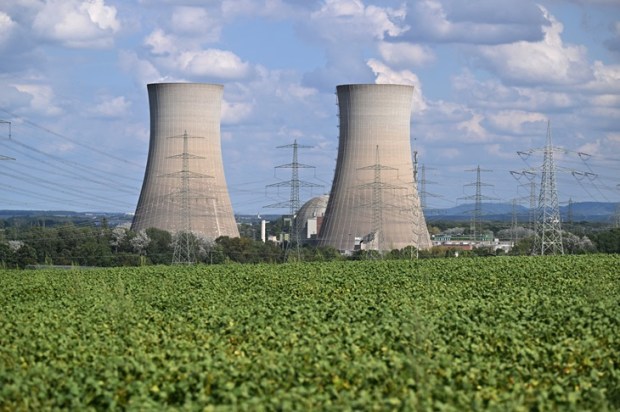Australia’s debate on nuclear energy is stuck in a narrow conversation about cost. Critics focus on high upfront prices for large reactors and emerging small modular reactors (SMRs), as if this alone should rule out the technology. This approach misses the bigger picture – nuclear power is not only an energy solution, it’s the cornerstone of a transformative opportunity that could make Australia a global leader in green industries, while delivering long-term energy security and economic resilience.
A few years ago, the UAE was heavily reliant on fossil fuels, with a domestic energy mix that left little room for innovation. Then came Barakah, the UAE’s first nuclear power plant, built in partnership with South Korea. The four reactors were largely delivered on time and within budget, defying the typical narrative of nuclear projects plagued by delays and cost overruns. Today, the UAE is leveraging the clean, consistent energy from Barakah to fuel new industries. They are producing green hydrogen for export, decarbonising steel and cement production, and positioning themselves as leaders in the global shift toward sustainable materials.
Australia has an even greater opportunity. With the world’s largest uranium reserves, we hold a unique advantage. For decades, we have exported this valuable resource without adding much value. By lifting the nuclear ban, we could unlock an entirely new industry: enriching uranium, manufacturing nuclear fuel, and powering reactors that not only generate clean electricity but also support a green industrial transformation.
Unprocessed uranium, mostly uranium oxide (U₃O₈), costs around USD $142 per kilogram in 2024 (Statista). But when uranium is enriched to make it suitable for nuclear power, its value increases significantly. Enrichment is a complex process that adds about USD $100 for each unit of work required to make the uranium more powerful (The Bulletin). To enrich just one kilogram of uranium costs about USD $700 more, raising its price to around USD $842 per kilogram. This illustrates how enriching uranium adds significant value. If Australia were to develop this capability, we could create a profitable new industry, driving economic growth and exports.
The demand for green steel and cement is surging as nations race to decarbonise. These materials are vital for building future infrastructure, from renewable energy systems to sustainable housing and transportation networks. Australia, as a major exporter of iron ore, is perfectly positioned to integrate nuclear energy into green steel production, capturing a premium in global markets where low-carbon materials are becoming increasingly essential. Nuclear-powered cement plants could do the same, providing a product with significantly lower emissions than traditional methods and opening up valuable export opportunities.
This isn’t just hypothetical. Countries like Germany and Japan are already exploring ways to decarbonise heavy industries using clean energy. The UAE is actively marketing its green steel and hydrogen to energy-conscious European buyers. These markets exist now, and Australia stands to gain by entering them.
The costs often cited against nuclear power must be viewed in context. Yes, large reactors require significant initial investment, and SMRs, as a newer technology, carry high early-stage costs. But these figures represent only a snapshot. Like any major infrastructure project, nuclear plants deliver returns over decades. Their lifespans – 60 to 80 years – far exceed those of renewable energy installations, which often need replacing after just 20 or 30 years. The reliability and stability of nuclear power also reduce the need for expensive backup systems, a major issue for Australia’s current reliance on intermittent renewables.
The financial opportunities nuclear energy presents further justify its upfront costs. Imagine Australia not only powering its own industries but becoming a global hub for green exports. By building a domestic nuclear industry, we could establish high-value supply chains, from uranium enrichment to manufacturing advanced materials. This would create thousands of skilled jobs and billions in export revenue.
The alternative is a future where we squander our natural advantages, exporting raw materials while importing the clean technologies others have developed. As China, India, Indonesia, and South Korea expand their nuclear capabilities, Australia risks being left behind, dependent on foreign expertise and vulnerable to energy insecurity.
Opposition to nuclear energy often hinges on fear of the unknown or a refusal to move past outdated assumptions. But the evidence is clear: nuclear energy is not a cost; it is an investment. It is a pathway to energy independence, industrial innovation, and economic growth. It is Australia’s ticket to becoming a leader in the global transition to Net Zero.
As we approach 2025, the need for a strategic and forward-thinking energy policy has never been clearer. This is the year for Australia to make a bold choice: invest in nuclear, embrace uranium’s untapped potential, and secure a clean, prosperous future for generations to come. With the world watching, the time for action is now. Australia has everything it needs to succeed. We have the uranium, the technology, and the demand for green industries. What we lack, for now, is the political courage to act. It’s time to move beyond the cost debate and focus on the opportunities in front of us. The world is ready for Australian leadership, and Australians should be, too.
























